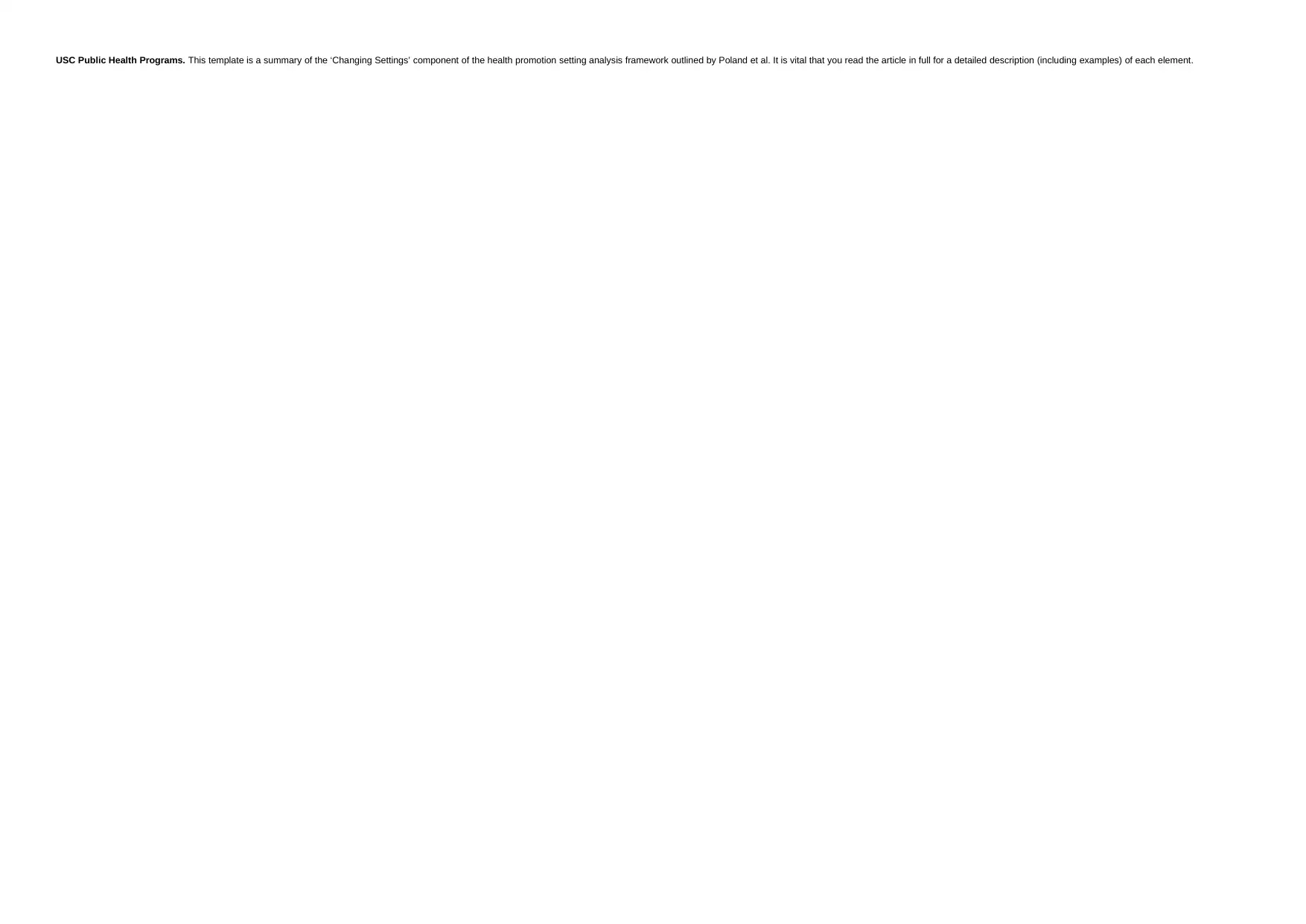Comprehensive Analysis of USC Public Health Programs and Frameworks
VerifiedAdded on 2023/06/04
|2
|736
|481
Project
AI Summary
This assignment analyzes USC Public Health Programs using the 'Changing Settings' component of the health promotion setting analysis framework outlined by Poland et al. The assignment explores various aspects, including context, capacity, focus, engagement, and strategy. It examines a diabetes program, detailing stakeholder roles (practitioners, managers, professionals, communities, and government), values, and the Transtheoretical Model. Engagement strategies, competing interests, and the evolution of the healthcare organization are discussed. The analysis also delves into the definition of success, unintended consequences, and the importance of evaluation. The assignment also includes project governance structure, stakeholder identification, and a strategy plan table, providing a comprehensive overview of health promotion strategies and their evidence base within the USC Public Health Programs.
1 out of 2








![[object Object]](/_next/static/media/star-bottom.7253800d.svg)